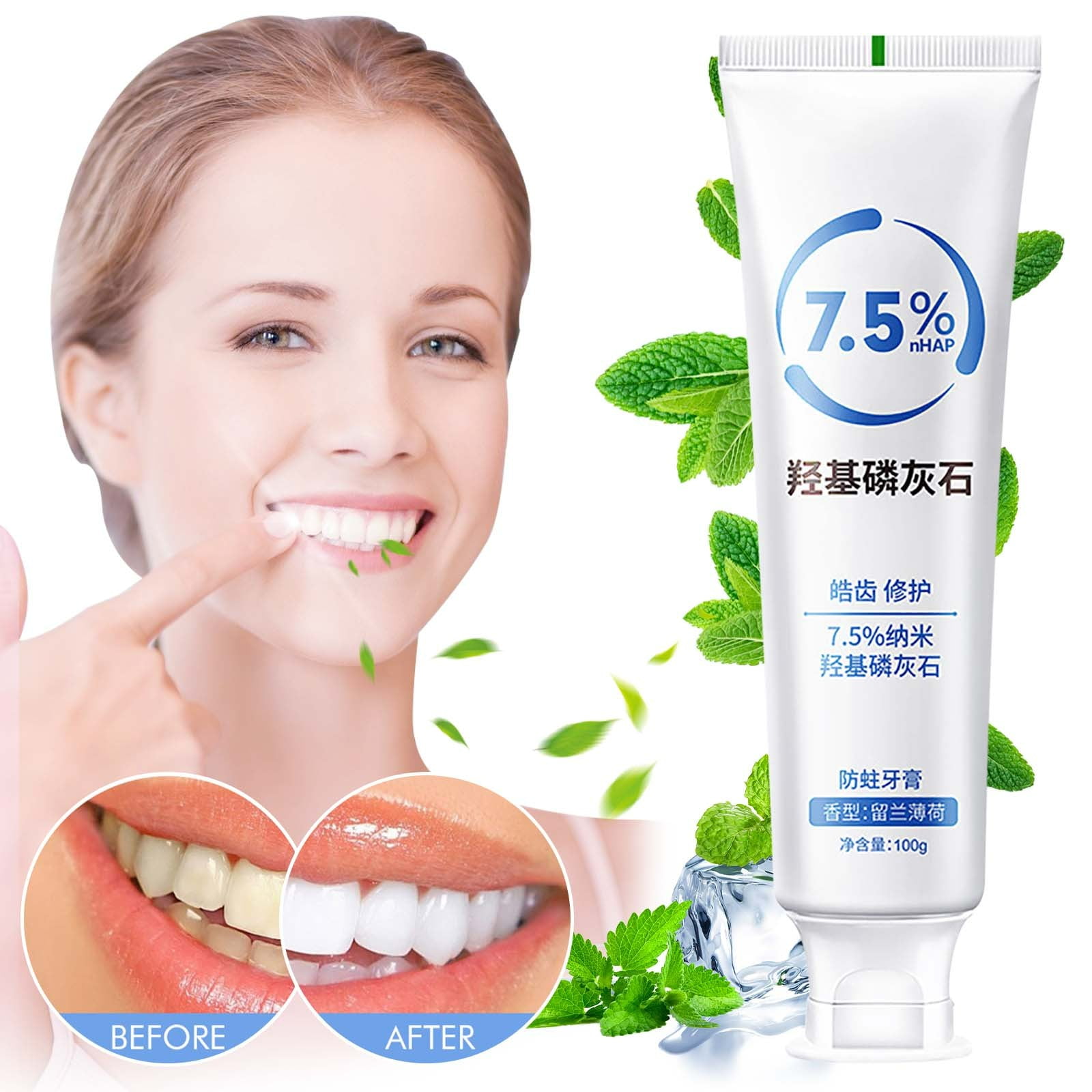Non Mint Toothpaste: Freshens Breath Naturally

The quest for a healthy, chemical-free lifestyle has led many to seek alternatives to traditional toothpaste, particularly those containing mint. While mint has been a staple flavor in oral care products for its refreshing and cooling sensation, some individuals may prefer or require non-mint options due to personal taste, sensitivity, or dietary restrictions. Non-mint toothpaste offers a viable solution, utilizing natural ingredients to freshen breath and promote oral health without the invigorating zing of mint.
The Evolution of Oral Care: A Shift Towards Natural Ingredients
The oral care industry has witnessed a significant shift in recent years, with consumers increasingly opting for products that are free from harsh chemicals, artificial sweeteners, and dyes. This movement towards natural and organic products stems from growing concerns about the impact of synthetic ingredients on overall health and the environment. Non-mint toothpastes are part of this evolution, catering to a diverse range of preferences and needs by incorporating a variety of natural ingredients that not only freshen breath but also contribute to healthier gums and teeth.
Natural Breath Fresheners: Alternatives to Mint
Several natural ingredients have been found to possess breath-freshening properties, making them excellent alternatives to mint in toothpaste. Some of these include:
- Essential Oils: Certain essential oils like lemon, orange, and tea tree oil are known for their antimicrobial properties, which can help combat bacteria that cause bad breath. These oils can also leave a refreshing, clean sensation in the mouth without the cooling effect of mint.
- Herbs: Herbal extracts from plants like eucalyptus, sage, and parsley have been used for centuries for their oral health benefits. They can help reduce plaque, prevent gingivitis, and freshen breath naturally.
- Spices: Spices such as cinnamon and cloves have natural antibacterial properties that can help control the growth of bacteria in the mouth, contributing to fresher breath.
Comparative Analysis: Non-Mint vs. Traditional Toothpaste
When considering the switch to a non-mint toothpaste, it’s essential to evaluate how these products compare to their traditional counterparts in terms of effectiveness, ingredient safety, and user preference.
Effectiveness
Non-mint toothpastes, when formulated with the right natural ingredients, can be just as effective as traditional toothpastes in cleaning teeth, reducing plaque, and preventing gingivitis. The key is to select products that contain proven natural breath fresheners and oral health promoters.
Ingredient Safety
One of the primary reasons individuals opt for non-mint toothpastes is the desire to avoid certain chemicals found in traditional products. Non-mint alternatives often boast a cleaner ingredient list, free from artificial flavorings, colors, and preservatives. However, it’s crucial to scrutinize the ingredient list, as not all natural products are created equal, and some may still contain allergens or irritants.
User Preference
User preference plays a significant role in the choice between non-mint and traditional toothpaste. For those who find mint too overpowering or prefer a different flavor profile, non-mint options can provide a welcomed change. Additionally, individuals with specific dietary needs, such as those following a vegan or halal diet, may find that non-mint toothpastes offer more compliant options.
Expert Insights: Formulating Effective Non-Mint Toothpaste
Formulating an effective non-mint toothpaste requires a deep understanding of oral health needs and the properties of various natural ingredients. According to dental health experts, an ideal non-mint toothpaste should:
- Contain Natural Abrasives: Gentle abrasives like silica or calcium carbonate help remove plaque and surface stains without damaging tooth enamel.
- Incorporate Antimicrobial Agents: Essential oils or herbal extracts with antimicrobial properties can help control bacterial growth, reducing the risk of bad breath, gingivitis, and other oral health issues.
- Be Free from Harsh Chemicals: Avoiding artificial sweeteners, flavors, and dyes can make the toothpaste more appealing to those seeking a natural oral care product.
Future Trends: The Rise of Customizable Oral Care
The future of oral care is likely to be shaped by personalization, with products tailored to individual needs and preferences. Non-mint toothpaste, with its emphasis on natural ingredients and diversity of flavors, is at the forefront of this trend. As consumers become more aware of the ingredients in their oral care products and their impact on health, the demand for customizable, natural options is expected to grow.
Decision Framework: Choosing the Right Non-Mint Toothpaste
For those considering a switch to a non-mint toothpaste, the following decision framework can be helpful:
- Identify Needs and Preferences: Determine what you’re looking for in a toothpaste, such as specific natural ingredients, flavor preferences, or oral health benefits.
- Research Ingredients: Look into the natural ingredients used in non-mint toothpastes, their benefits, and any potential allergens or irritants.
- Consult Professional Advice: Dentists and oral health professionals can provide valuable insights into the effectiveness and safety of various non-mint toothpaste options.
- Read Reviews and Try Samples: User reviews and product samples can give you a firsthand experience of a non-mint toothpaste’s texture, taste, and effectiveness.
Conclusion
Non-mint toothpaste represents a viable and healthy alternative for those seeking a refreshing, chemical-free oral care solution. By understanding the natural ingredients that contribute to breath freshness and oral health, individuals can make informed decisions about their oral care products. As the trend towards natural and personalized care continues, the future of non-mint toothpaste looks promising, offering a diverse range of options that cater to different needs and preferences.
FAQ Section
What are the benefits of using non-mint toothpaste?
+Non-mint toothpaste offers several benefits, including the use of natural ingredients, avoidance of harsh chemicals, and suitability for individuals with mint sensitivities or preferences for alternative flavors.
Are non-mint toothpastes as effective as traditional toothpastes?
+Yes, when properly formulated with effective natural ingredients, non-mint toothpastes can be just as effective in maintaining oral health and freshening breath as traditional mint toothpastes.
How do I choose the right non-mint toothpaste for my needs?
+Choosing the right non-mint toothpaste involves identifying your oral health needs, researching natural ingredients, consulting with dental professionals, and possibly trying out different products to find the one that best suits your preferences and needs.


